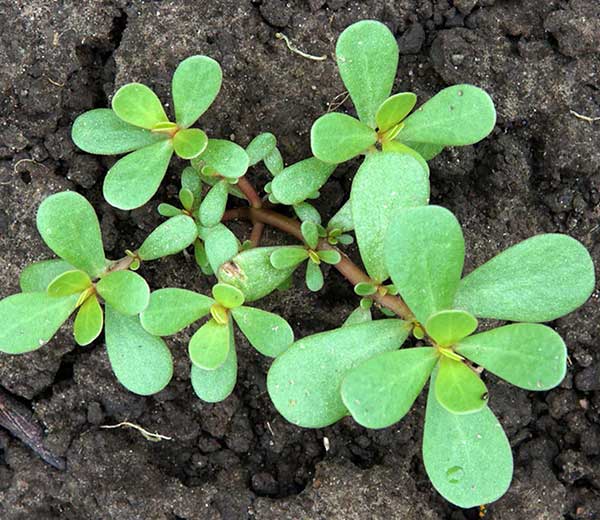
Purslane is a plant that grows in gardens like weeds. Most people tend to get rid of it as soon as it starts growing. However, this plant offers many benefits that very few people know about. Here are 8 good reasons to plant purslane in your garden:

Purslane is an annual herbaceous plant that forms clumps. It has long, creeping stems and is covered with small, round, oily, pale green leaves. Between July and October, it is adorned with small yellow flowers. We tried the fresh leaves, which have a slightly sour and spicy taste. It grows spontaneously in the gardens of the South of France, but you can also grow it in your garden or in a pot if your soil doesn’t suit it!
Purslane (Portulaca oleracea L.) spreads its succulent stems, whose fleshy tissue is rich in water, close to the ground in late summer. It is mistakenly classified as an herb, but in fact it is one of the oldest vegetables. Imported from the East by the Romans and then abandoned over time, it has become naturalised in our gardens. Jean-Baptiste de La Quintinie, gardener of Louis XIV, had empirically recognised the outstanding nutritional properties of purslane and considered it a “healthy salad”. In addition, it is a bioindicator plant, that is, it provides information about the quality of soil. If it is present in large quantities, it is because the soil is too compact, lacks air and is lacking calcium. In addition, it points to a dry underground in the summer and then there are problems with the fastening of the elements.
8 good reasons to plant purslane in your garden:
1. Combat depression:
Purslane leaves are a good source of Omega-3, which is an important fuel for the brain, prevents heart failure, and is an important treatment for depression. According to Mother Earth Living, you can replace your leafy greens in your dishes with purslane leaves. Use them to garnish your sandwiches, add them to your soups, stews and above all to all your salads! Purslane has a sharp flavor and can sometimes be tart.
Contraindication: Avoid consuming Pursulak during pregnancy as it promotes contraction of the uterine muscles.
2. HYDRATION:
Purslane consists of 93% water. Consume this herb to recharge dehydrated cells.
3. QUIET INFLAMMATION
Already in ancient Greece, purslane was used for the relief of inflammation of the skin, but also of the mucous membranes. Purslane is also effective in the treatment of respiratory tract infections such as sore throats, but also urinary tract infections such as painful cystitis. In addition, purslane has diuretic properties.
4. AN EXCELLENT ANTIOXIDANT
Purslane is rich in vitamins A, C and E, which are said to slow down cell damage and delay skin aging.
5. Facilitate blood clotting
Purslane leaves are also used to promote blood clotting.
In phytotherapy, the whole plant is used: fresh, boiled or dried, and then crushed into powder to be taken in the form of capsules. A well-known benefit of purslane capsule is the regulation of blood sugar, which is especially important for people with diabetes.
6. RICH IN ESSENTIAL NUTRIENTS
Calcium and Magnesium – Add purslane leaves as recommended above to maintain healthy bones, teeth and muscles.
Potassium: By adding Pursulak to your daily diet, you will help maintain good blood pressure
Iron – Iron is not only found in meat and beans. Purslane is also a good source of iron.
7. CONTAINS BETALINES
Purslane contains betalain. It is an antioxidant that prevents cholesterol from damaging blood vessels. Therefore, Purslane has an extremely positive effect on the cholesterol level.
8. PRODUCTION OF MELATONIN
This antioxidant helps in the production of melatonin. Melatonin is very important for regulating sleep-wake rhythm.
HOW TO TASTE PURSLANE?
Purslane is closely related to lamb’s lettuce and is sometimes called a health salad. Its fleshy leaves have a beautiful deep green color even in winter. Something to spice up the dishes! Don’t just eat the leaves, because the stems are also very tasty. The thicker stems can be brewed and enjoyed as pickles.
Let Purslane grow in your garden! Learn to add it to your dishes and you will be healthier!
